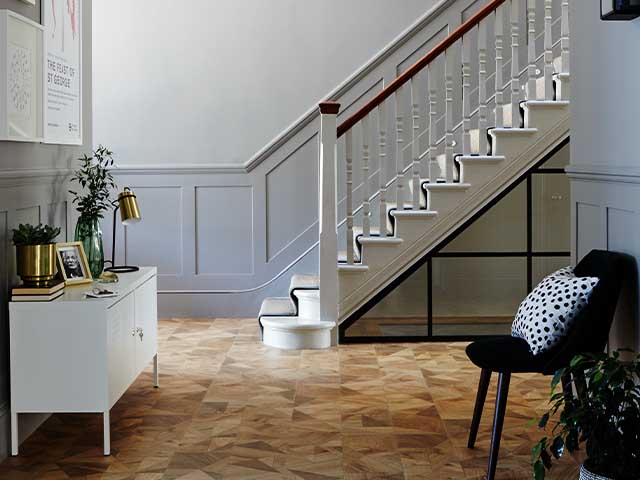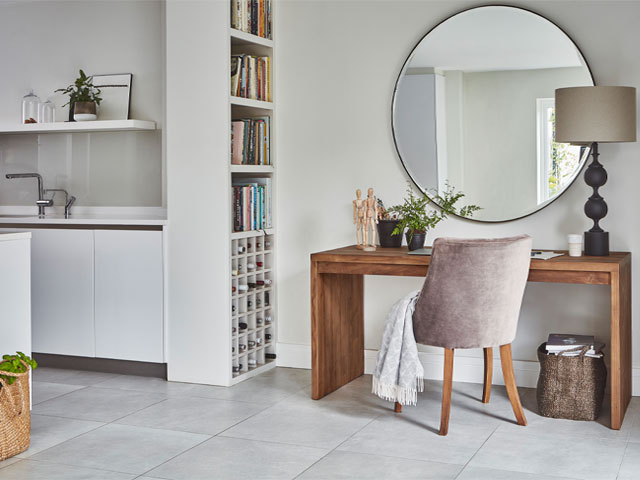
18 clever ways to make any space feel bigger
We know that small can be beautiful, but that doesn’t curb our desire for bigger. This is particularly the case as homes are shrinking, with research revealing that homes have been decreasing in size every decade since the 1950s.
It’s little wonder, therefore, that British homeowners are desperate for more space. A survey by Ready Steady Store reveals that half of us are craving some additional square footage in our humble abodes.
Thankfully, there are some simple yet effective ways to make your interiors seem bigger than they are.
“Clients frequently ask us to transform small spaces, making them appear and feel larger,” explains Milena Vallier, lead designer at My Bespoke Room.
“When executed skilfully, the most compact of areas can become cosy, zen-like retreats. However, squeezing all your belongings into a tiny space can quickly make it feel cramped, claustrophobic, and far from restful. The limited square footage often forces a focus on practicality over aesthetics.
“But with some clever tricks of the trade and attention to detail, even the smallest rooms can be big on both style and function.”
From tall built-ins to bold patterned wallpaper and colour drenching, our design-led hacks will make your home feel more spacious and bright – no extension required.
Pay attention to the layout
The first step in designing any space is planning a good working layout.
“With smaller rooms, this step becomes even more important as the layout will have to work much harder,” Milena explains.
The first step, she suggests, is keeping pathways clear.
“When furniture and accessories block the view into a room, it will look cramped,” Milena says. “By moving furniture out and away from walkways, you’ll open up the space and make it feel larger. Always think about circulation space in rooms of any size.”
Milena also suggests trying to create an open plan layout, where possible, by removing dividing walls.
“If this is not possible or not in budget, remove interior doors for a more open concept or replace them with glazed ones,” she adds.
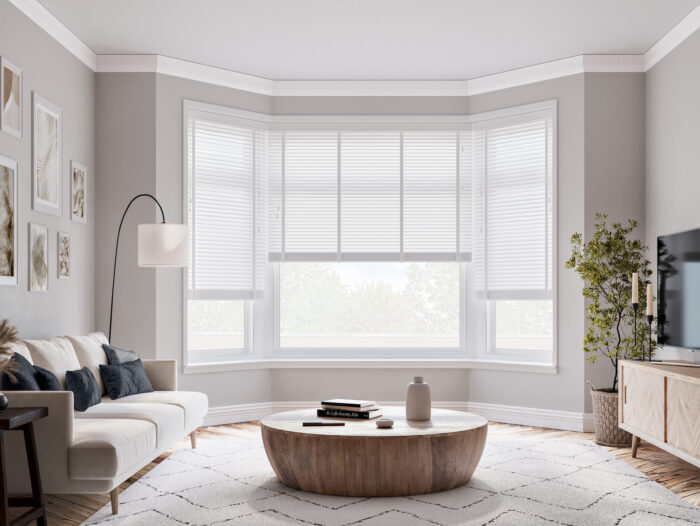
Pare back your furniture
Use a few, simple pieces of furniture or accessories rather than lots of smaller pieces, which can make a small space look cluttered.
“A pair of armchairs can often take up more space than a small sofa for example but provide less seating space,” Milena explains.
“Opting for a smaller streamlined sofa, complete with a little side table to place a drink and a floor lamp rather than a table lamp, can be a much better use of space.”

Make good use of vertical space
Floor-to-ceiling shelving allows you to clear floor clutter and make use of valuable wall space.
Milena suggests swapping out bulky furniture for wall mounted pieces or shelves. “The more of the floor you can see, the larger the room will appear,” she adds.
A top-to-bottom unit will also draw the eye upward and make the ceilings instantly appear higher.
Anne Haimes, design director and founder of Anne Haimes Interiors , suggests opting for tall, slim bookshelves decorated thoughtfully to draw the eye upward, extending the height of the ceiling.
“Mix the positioning of books — some standing, some lying down — and add decorative items or framed pictures,” she suggests.
For furniture that can’t be wall mounted, such as your sofa, Milena recommends choosing styles with slim legs.
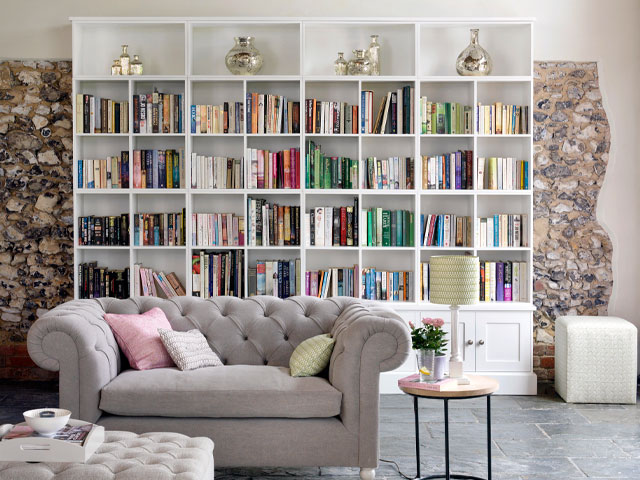
Make the most of smart furniture
Multi-functional pieces are perfect for maximising space while also acting as precious storage.
“Use mobile and multi-functional furniture that can be easily moved and to serve different functions, for example an ottoman that doubles up as storage and a coffee table,” Milena suggests.
“Opt for dining benches and bar stools that can be tucked under to create more space.”
In a bedroom, Anne says a bed with built-in storage reduces clutter and eliminates the need for additional storage units.
“If possible, position your bed lengthwise in the middle of the longest wall,” she adds. “This allows for two bedside tables and lamps without the bed dominating the central floor space.”
Be storage smart
Plan very carefully for storage, as clutter is the enemy of small spaces.
“There’s nothing that makes a small space feel more cramped than having too much stuff,” says Milena. “Plan your storage very carefully so everything has a place and is out of sight. If possible, opt for bespoke storage solutions which make use of every single inch of available space and can blend seamlessly with the walls.”
Anne says many Victorian and traditional older homes have void spaces above windows set in dormer window structures.
“This is wasted space which can be transformed into a built-in storage cupboard that doesn’t take floor space,” she adds.
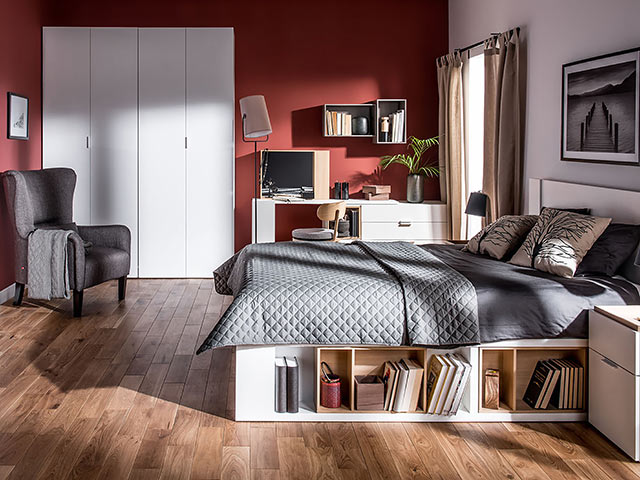
Pick the right colour scheme
The right colour scheme has the power to completely change the way we perceive a space and can even make a space feel larger.
“Naturally, using pale or single colour palettes throughout will make a small room feel bigger,” explains Milena. “Pieces of furniture that are a similar shade to the wall colour are less jarring and tend to blend in with the space.”
Milena says pale neutrals such as white, cream, and beige as well as pastel colours such as light blue or green are go-to shades to make rooms feel bigger, airier, and brighter.
“But the opposite of a common decorating truth can also be true: darker shades can work really well within smaller spaces,” she counters. “They create a perception of depth and lend a cocoon-like feel – welcome in every small room.”
Try some colour drenching
Milena suggests painting the doors, skirting boards and woodwork of a small room in the same colour as the walls to blur the line between where walls begin and end.
“This can make a compact space feel bigger,” she adds.
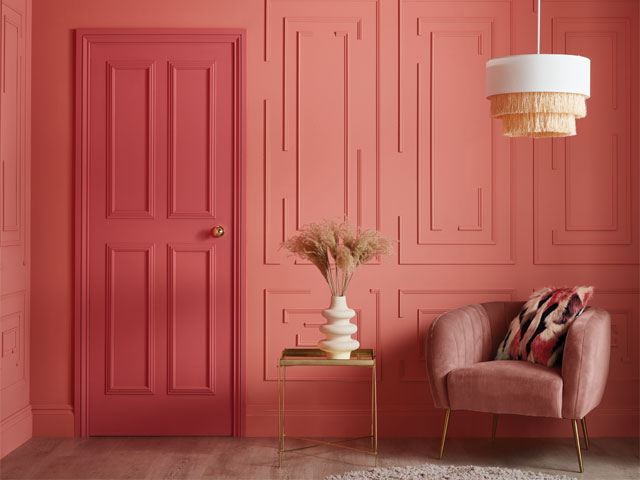
Don’t be afraid of pattern
According to Milena, a large-scale patterned wallpaper can actually trick the eye into thinking there is further depth than there is.
“When applied to all walls, it can even soften the perception of a room’s corners,” she explains. “This approach is perfect in smaller bedrooms, snugs and downstairs loos.”
Bold horizontal stripes – either painted or on wallpaper – will also make a room look wider.
“Vertical stripes will make the ceilings feel taller and create a more expansive feel,” Milena adds.

Use light wisely
A well-lit room, either by natural light or artificial lighting, will help make any space look larger.
“Artificial lighting is key and this should be carefully considered in layers, ambient, task and accent lighting,” Milena explains. “Add lighting to every dark corner to illuminate every inch.”
In small rooms with high ceilings, Milena suggests opting for a low-hanging statement pendant to restore balance.
Reflect the light with mirrors
Using mirrors, glass and reflective surfaces will help make the space feel larger and bounce the light around.
Milena suggests placing large mirrors opposite a window for maximum effect and using glass furniture and accessories for a light and airy feel.
“Hallways are often smaller in size and with more limited natural light and in here an extra large mirror will work wonders,” she adds.

Think about window treatments
“Avoid heavy curtains that cover the sides of the windows,” Milena suggests. “Instead install a curtain track or pole which is 15-20cm wider than the window at each side so that the curtains can open without blocking the natural light from the window.”
She also suggests selecting the curtain fabric in the same colour as the walls so they blend seamlessly.
Anne says opting for floor-length styles and placing them as high as possible above the window will help to elongate the room.
“Adding a pelmet in the same fabric extends the height without leaving a void space, enhancing vertical lines and adding a touch of luxury and sophistication,” she adds. “This creates an opulent and regal atmosphere, particularly in a bedroom.”
While curtains are ideal, Anne says shutters are very effective and save lots of space.
“Plus, they give added privacy without having to enclose a room in darkness,” she adds.
“If you’re worried they may feel a bit cold and clinical, opt for warm tones and darker colours to enrich the room.”
Be clever with scale
Scale is also very important to give the illusion of a larger space
Milena suggests choosing key pieces of furniture with a low profile/height and more compact size to create more sense of space
“For a more minimalist look, you can use less furniture overall but with larger-scale pieces,” she adds.

Don’t forget art
Hanging oversized wall art will help to create an illusion of more space.
“Gallery walls are great when there’s lots of space, but they can be tricky to pull off when space is limited and can look too busy,” Milena advises.
“Instead, opt for a single oversized piece or two larger pictures side-by-side, perhaps above a sofa or other large item of furniture.
“Large artwork in a small space will grab the attention and draw the eye upwards and away from the floor, helping to stretch the space visually and make the room appear bigger.”
Go reflective in the kitchen
In the kitchen, choose reflective surfaces like glass, stainless steel or high-gloss finishes to reflect light and create a lighter, airier and more expansive feel.
“Remember, darker tones make a space feel smaller and cosier, which is great for large areas but not ideal for small spaces, unless that’s your goal,” Anne adds.
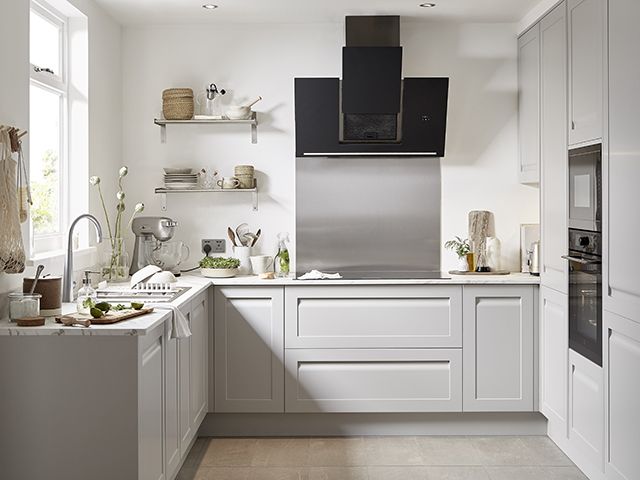
Think about organisation
In a small kitchen, organisation is essential.
“Ensure every utensil, storage jar, recipe book and appliance has a designated spot to avoid clutter, which can make the space feel chaotic and even smaller,” Anne adds.
“Utilise vertical space with wall-mounted storage solutions to save counter space and keep things tidy.”
Supersize your tiles in the bathroom
Choosing large reflective tiles in a small bathroom will create a sense of spaciousness, unlike small mosaic tiles that can make the room feel smaller and busier because of the numerous grout lines.
“Your choice of grout colour matters too,” Anne adds. “Dark grout against pale tiles has a more striking appearance but may also make the space feel cluttered.
“White grout, which is far more common, is generally the safer option, but be mindful of dirt and mould build up.”
Take it off the floor
Opting for floating shelves and vanity cases will free up floor space in a bathroom that is challenged in square footage.
Anne also suggests creating height by layering floating shelves in a zigzag pattern.
“These add visual interest, especially when decorated thoughtfully,” she adds.
“Also consider wall-hung toilets with the tank installed inside the wall to save both wall and floor space.”

Brighten your hallway
If you have a small and cramped hallway, Anne suggests opting for downlights rather than pendant lights to illuminate the space well and make it feel warm and welcoming without stealing too much space.
“Where possible, keep the hallways clear and uncluttered with coats, boots and excess décor. Minimalistic décor is key,” she adds. “A runner carpet will add a warm and homely feel without making the space feel small. “
